Part Of 14-Year-Old Patient’s Skull Goes Missing In Iran
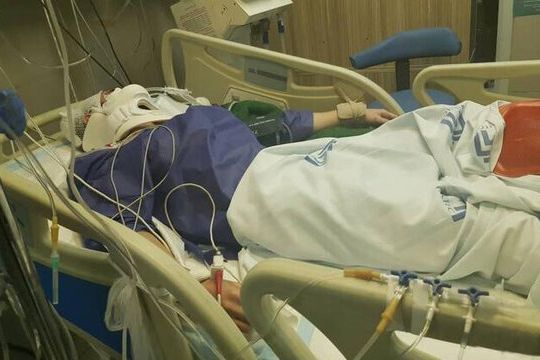
A portion of a 14-year-old boy’s skull that doctors had temporarily removed due to brain swelling, has gone missing at a hospital in Minab, Hormozgan Province.

A portion of a 14-year-old boy’s skull that doctors had temporarily removed due to brain swelling, has gone missing at a hospital in Minab, Hormozgan Province.
Reports say that the teenager, identified as Hamza, sustained a brain injury in a motorbike accident in May. Initial cranioplasty surgery involved the removal of part of his skull to relieve pressure on his brain from swelling.
Doctors planned to reattach the piece of skull after recovery, but Hamza's father revealed to local media that during a recent hospital visit, medical staff informed him that the missing portion was "unavailable."
Authorities are investigating the matter and said that if negligence is established, appropriate legal action will be taken.
Dr. Hasan Zarei, Deputy of Treatment at Hormozgan University of Medical Sciences, said that Hamza's cranioplasty, during which a titanium implant was inserted in place of the removed section, was conducted “successfully” last Thursday. Regarding the missing piece, he said, “experts are currently investigating the matter and emphasized that any deviation from scientific and legal protocols will be addressed in accordance with regulations.”
He added that this surgery is a common medical procedure globally and urged trust in the medical institution.
Meysam Salehi, head of Hazrat-e Abolfazl Hospital in Minab also confirmed that investigations are ongoing and confirmed that in the case of negligence, “appropriate legal measures will be taken”.
According to medical officials in Hormozgan Hamza's vital signs are stable, and he has been discharged from intensive care, remaining under hospital care in the surgical ward.
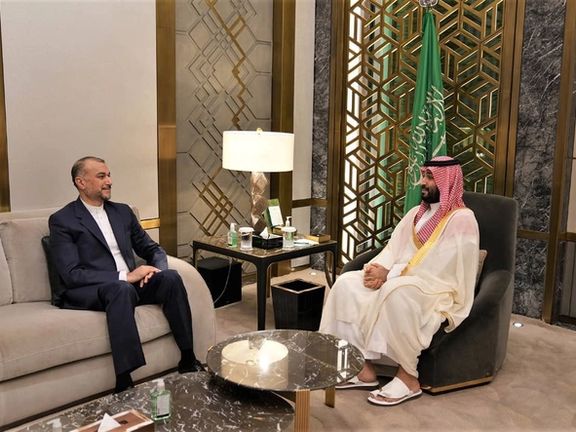
Saudi Arabian Crown Prince Mohammed bin Salman met Iranian Foreign Minister Hossein Amir-Abdollahian in Jeddah on Friday in the highest-level talks since the countries reconciled after years of bitter rivalry that destabilized the region.
The unscheduled meeting comes a day after Amir-Abdollahian arrived in the kingdom and declared ties between the countries were "on the right track" following talks with his Saudi counterpart Prince Faisal bin Farhan.
Mohammed bin Salman, widely known as MbS, is the kingdom's de facto ruler, and has pushed to reorient Saudi foreign policy in recent years amid questions over its historically close relationship with the United States.
Amir-Abdollahian posted on X that “This morning we had a 90-minute meeting with Emir Mohammad bin Salman in Jeddah. We had an open, direct, beneficial and productive discussion based on good neighborliness. With the will of the leaders of both countries, we stressed [on the importance] of lasting bilateral relations in all areas.”
Iranian media cited the Iranian delegation as saying the meeting had been "very good". Saudi state news agency SPA said they discussed international and regional developments.
Rivalry between Iran's revolutionary, Shiite Muslim leaders and Saudi Arabia's Sunni ruling family dominated Middle Eastern affairs for years as they competed for influence in wars and political struggles in Iraq, Syria, Lebanon, Yemen and Bahrain.
However, China brokered a rapprochement in March leading to a resumption of full diplomatic relations, which Saudi Arabia had broken off in 2016 when protesters attacked its Tehran embassy over Riyadh's execution of a prominent Shiite cleric.
Prince Faisal visited Tehran in June and said he hoped Iranian President Ebrahim Raisi would visit the kingdom at the "appropriate time".
Reporting by Reuters

Amid faculty suspensions for supporting student protests, Tehran’s Allameh University has formally terminated a renowned sociology professor.
After being issued with a "Collaboration Termination" letter, Dr. Mehdi Khoiee, a professor at the university for the past seven years, posted about the termination on his Instagram account. "I am left pondering where to channel my grievances against this glaring injustice,” he wrote
The termination follows a growing trend of academic staff being subject to punitive measures for their perceived association with student dissent.
Students from the Faculty of Social Sciences at the university voiced their outrage at his expulsion in an official statement, which drew attention to the mounting wave of dismissals ranging from student suspensions to the abrupt expulsion of committed faculty members like Dr Khoiee.
Moreover, the statement issued by the student body drew attention to the case of another academic, Professor Armin Amir, who met a similar fate due to his empathetic stance towards protesting students.
This incident is part of a broader pattern affecting the academic community, whereby educators from institutions across the country have faced suspension or expulsion due to their solidarity with the students' expression of dissent.
Student unions nationwide view these actions as part of a wider initiative to cleanse universities and criticize the regime for trying to dismantle a bastion of free inquiry and discourse.
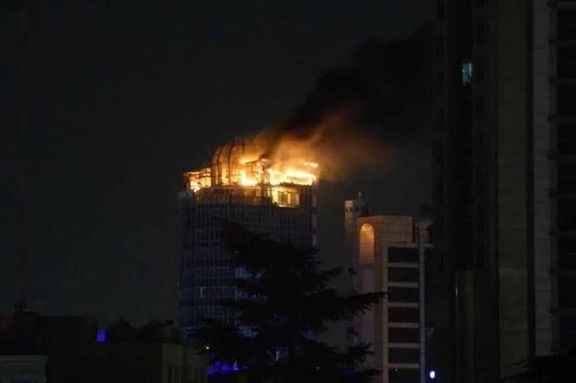
Three firefighters have sustained injuries whilst extinguishing a commercial building fire in Karaj, west of Tehran, that broke out Thursday night.
The incident at Taleghani Tower was successfully brought under control by the firefighting team, local authorities announced.
Mehdi Samiei, the spokesperson for the Fire and Safety Services of Karaj Municipality said, "The fire originated on the 16th floor of a commercial complex, and through the efforts of firefighting teams, it was extinguished."
"Unfortunately, three firefighters sustained injuries during the firefighting operation," he added. Samiei also disclosed that an investigative team is onsite, scrutinizing the circumstances that led to the incident.
Furthermore, he highlighted the scale of the response, stating, "A total of fifty personnel, complemented by fifteen emergency vehicles from twelve stations, were dispatched to the scene to engage in firefighting and rescue operations."
Although hundreds of buildings in Tehran are at high-risk of fire, authorities are withholding the list of endangered buildings to avoid public concern.
In January 2017, the Plasco Building's fire caused its 20-story collapse, claiming 20 firefighter lives and injuring 70 more.
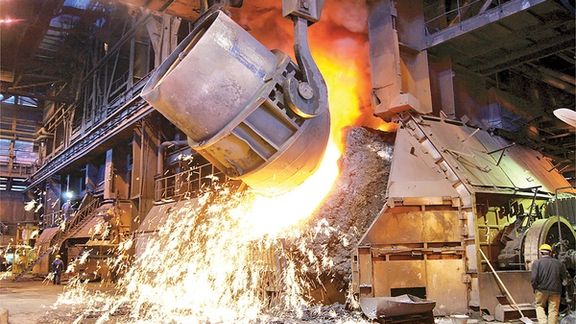
Amid the ongoing power shortage crisis in Iran, Khuzestan Steel Company has been forced to halt operations and put workers on mandatory furloughs.
According to information obtained by Iran International the shutdown of Iran’s second biggest steel producer started a week ago following several weeks of reduced operations due to persistent electricity outages.
According to an informed source, each day of the shutdown results in a substantial loss of around $15 million. Khuzestan Steel Company is in southwestern Iran near Ahvaz, the provincial capital of oil-rich Khuzestan province, whose residents are grappling with regular power outages in the midst of one of the worst heatwaves in recent history.
The company's CEO Amin Ebrahimi told IRGC-affiliated Fars news agency Thursday that the plant is undergoing regular repair and maintenance at the moment, but he did not confirm the shutdown. He cited the Energy Ministry as announcing a 29% increase in electricity supply to steel plants, claiming that this will result in a boost in production.
Earlier in the year, reports by industry sources revealed that steel production in Iran had plummeted because the country faced a severe shortage of electricity and gas, both vital for running the plants. Iranian industrialist Reza Shahrestani said In January the steel industry needed 40 million cubic meters of gas daily, but their consumption was at 15 million cubic meters per day at the time. He added that almost 50% of the electricity supply for industries has been cut off too.
The World Steel Association, in its March report, removed Iran from the list of the 10 largest steel producers in the world. Iran has always been among the top 10 in the world, and in the first two months of 2023, Iran was the ninth largest steel producer ahead Turkey.
Economist Ahmad Alavi told Iran International that the total loss from the shutdown of Khuzestan Steel Company is not limited to the estimated $15-million because there are a lot of other businesses in different sectors that depend on the steel industry and will suffer losses. He added that the poor infrastructure in the steel industry – as well as other industries – is a result of decades of mismanagement and lack of investment, therefore the regime will not be able to resolve these issues in the near future.

Germany-based journalist Ata Hosseinian told Iran International that the shutdown is only one of the many consequences of the disparity between power generation and consumption. He added that now the power shortage in the country is not only impeding small businesses or plants but also damaging key industries.
In early August, Iran implemented a two-day shutdown of businesses and factories nationwide, initially presented as a health safety measure. However, it was later revealed that it was an excuse to deflect attention from the ongoing electricity, gas, and water shortages.
Payam-e Ma newspaper cited an informed yet unnamed source from the Energy Ministry as saying that the reason behind the shutdown was the country's electricity shortages. The constant rise in temperatures and decrease in rainfall across the country in the last decade have made electricity supply a challenge during peak consumption periods that happen in summers and winters. In July, Iran’s electricity usage hit a record of 72,500 megawatts, increasing the strain on power grids that were already struggling to meet demand.
"High temperature and increased electricity consumption in the past days have led the hydroelectric power plants of Karun-3 and Karun-4 dams – on the Iranian river with the highest water flow -- to produce electricity beyond their nominal capacity," the daily said. The power plants were reportedly generating electricity for more than 20 hours per day in the past several days, leading to a "depletion of water resources," which caused the plants to "temporarily cease production."
Power plant capacity and fuel supply are both inadequate to meet demand, and blackouts regularly happen in summer. Even so, Iran exports electricity to Iraq. Iran's electricity grid is overstretched and has failed to realize its annual growth plan for several years in a row, while consumption continues to grow, in part driven by extremely low prices. It is in dire need of significant investment and technological upgrade, which have been hindered for years by sanctions imposed because of Iran’s nuclear and missile programs.
Iranian environmentalist Kaveh Madani -- the former deputy head of Iran's department of environment who heads the United Nations University Institute for Water, Environment and Health, posted on X on Wednesday, stating that Iran’s bankruptcy of water, electricity, and gas cannot be solved by simply shutting down the country.
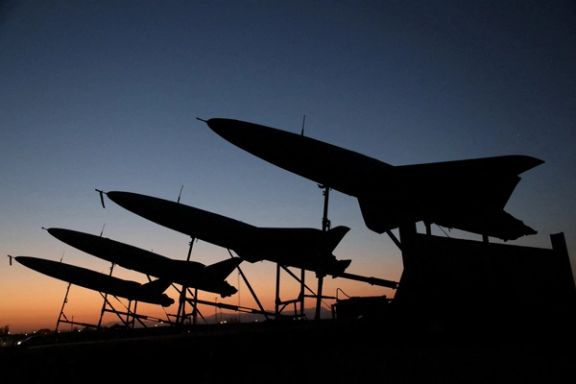
Russia is making significant strides in the mass production of an Iranian-designed attack drone, capable of targeting Ukrainian urban areas from over 1,000 miles away.
According to a report in the Washington Post, leaked documents from an insider within the Russian Republic of Tatarstan's Alabuga Special Economic Zone, indicate that, despite delays and a production process that affected by sanctions affecting essential components, Moscow has made steady progress toward its goal of manufacturing the Iranian Shahed-136, an attack drone capable of traveling more than 1,000 miles.
The source, opposing Russia's military involvement in Ukraine, also shed light on the complexity of the situation. Iran acknowledges supplying drones to Russia but insists these transactions occurred prior to Russia's February 2022 invasion of Ukraine.
While Russia had initially denied deploying Iranian drones in Ukraine, President Vladimir Putin supports expanding domestic drone production, envisioning an industry value exceeding $20 billion. Russian officials are yet to respond to the Washington Post's findings.
The report also asserts that Russia has built an autonomous drone production facility in the Tatarstan region, 500 miles east of Moscow, with plans to manufacture around 6,000 drones by mid-2025. Engineers at the facility are working on enhancing the Iranian drone's design, aiming for larger-scale production and improved quality. They are also exploring capabilities for coordinated "swarm attacks." Spanning from winter 2022 to spring 2023, the documents encompass blueprints, schematics, and crucial details, some of which were previously reported by the Russian news outlet Protokol.
In response, Washington has imposed sanctions on Russia and Iran, targeting key figures within a defense firm associated with drone supply to Russia. Several entities and individuals engaged in drone-related activities are also subject to sanctions.